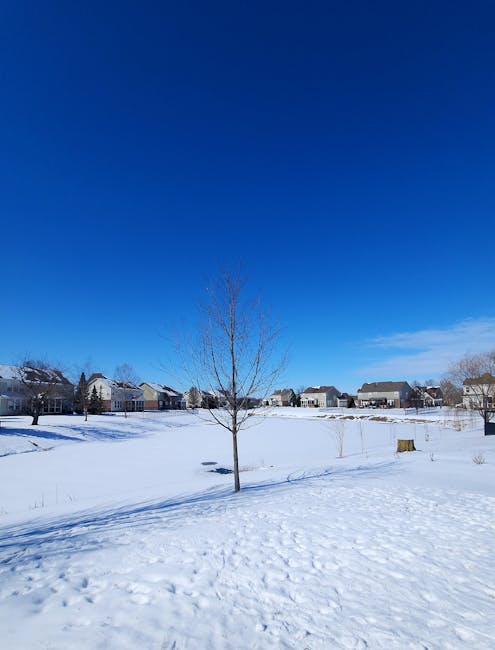Indianapolis Weather: A Comprehensive Guide to Hoosier State Climate
Indianapolis, the capital of Indiana, experiences a humid continental climate, characterized by hot, humid summers and cold, sometimes snowy winters. Understanding the city’s weather patterns is crucial for residents and visitors alike, whether planning outdoor activities, preparing for extreme weather events, or simply choosing the right outfit for the day.
Seasonal Weather Patterns in Indianapolis
Indianapolis’s weather varies significantly throughout the year. Let’s break down each season:
Spring (March-May):
Spring in Indianapolis is a transition period. Temperatures gradually rise, but expect fluctuating conditions. Rain showers are common, sometimes interspersed with sunny spells. The threat of late-season frost can linger into early May, affecting budding plants and flowers. Average temperatures range from the 40s (°F) to the 60s (°F).

Summer (June-August):
Summers in Indianapolis are hot and humid. Temperatures frequently reach into the 80s (°F) and 90s (°F), with high humidity levels making it feel even hotter. Thunderstorms, sometimes severe, are a frequent occurrence, often accompanied by heavy rainfall and strong winds. Heat indices regularly exceed 100°F, requiring caution and preparedness to avoid heat exhaustion.
Autumn (September-November):
Autumn in Indianapolis brings cooler, crisper air and vibrant fall foliage. Temperatures gradually decrease, moving from the 70s (°F) to the 40s (°F) as the season progresses. Rainfall remains fairly consistent, although the intensity of storms generally diminishes. Enjoy the beautiful colors of autumn, but be prepared for the first chilly nights and potential for early frost.
Winter (December-February):
Indianapolis winters are cold and often snowy. Temperatures frequently dip below freezing, with average lows in the 20s (°F) and highs in the 30s (°F). Snowfall is common, ranging from light flurries to significant accumulations. Freezing rain and ice storms can also occur, creating hazardous driving conditions. Prepare for winter by having emergency supplies on hand, including a well-stocked emergency kit.
Historical Weather Data for Indianapolis
Analyzing historical weather data provides valuable insights into long-term trends and typical weather patterns. While daily fluctuations are unpredictable, historical data offers a broader understanding of what to expect during specific times of the year. This information is readily available from various sources, including the National Weather Service and online weather databases. Reviewing this data helps individuals and businesses make informed decisions, from planning events to preparing for potential disruptions.

Understanding Indianapolis Microclimates
While Indianapolis experiences a relatively consistent overall climate, microclimates exist throughout the city. Areas near rivers or larger bodies of water may experience slightly milder temperatures, while areas with more extensive tree cover might have cooler temperatures and less direct sunlight. These localized variations can influence temperature, humidity, and precipitation levels.
Severe Weather in Indianapolis: Preparation and Safety
Indianapolis is susceptible to various severe weather events, including:
- Severe Thunderstorms: These can produce heavy rainfall, damaging winds, hail, and even tornadoes.
- Tornadoes: While not as frequent as in some other parts of the country, tornadoes can occur in Indiana, making preparedness crucial.
- Flooding: Heavy rainfall can lead to rapid flooding, especially in low-lying areas.
- Winter Storms: Snow, ice, and freezing rain can cause significant travel disruptions and power outages.
- Heat Waves: Prolonged periods of extreme heat and humidity pose significant health risks.
Preparing for severe weather involves several key steps:

- Develop an emergency plan: This should include evacuation routes, communication strategies, and essential supplies.
- Stay informed: Monitor weather forecasts regularly, especially during severe weather alerts.
- Assemble an emergency kit: This should include water, non-perishable food, medications, flashlights, batteries, and blankets.
- Know your surroundings: Identify potential hazards in your home and neighborhood.
- Follow safety guidelines: Heed warnings and instructions issued by officials.
Resources for Indianapolis Weather Information
Reliable sources for Indianapolis weather information include:
- National Weather Service (NWS): The official source for weather forecasts, warnings, and advisories.
- Local news media: Television, radio, and online news outlets provide up-to-date weather reports.
- Weather apps: Numerous weather apps offer detailed forecasts and alerts for specific locations.
The Impact of Climate Change on Indianapolis Weather
Like many other regions, Indianapolis is experiencing the effects of climate change. This can manifest in several ways, including:
- Increased frequency and intensity of heat waves: Leading to higher temperatures and more frequent heat-related illnesses.
- Changes in precipitation patterns: Resulting in more intense rainfall events and an increased risk of flooding.
- More variable winter weather: With fluctuations between periods of extreme cold and milder temperatures.
Understanding the potential impact of climate change is essential for adapting to future weather patterns and mitigating its effects.
Planning Activities Based on Indianapolis Weather
Whether you’re a resident planning a weekend outing or a visitor scheduling a trip, understanding Indianapolis’s weather is critical for successful planning. Check the forecast before heading out, choose appropriate clothing, and be prepared for unexpected changes. Consider indoor alternatives for outdoor activities if the weather forecast predicts severe conditions.

